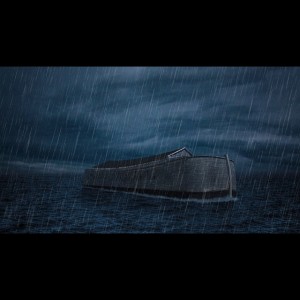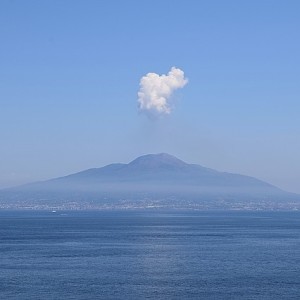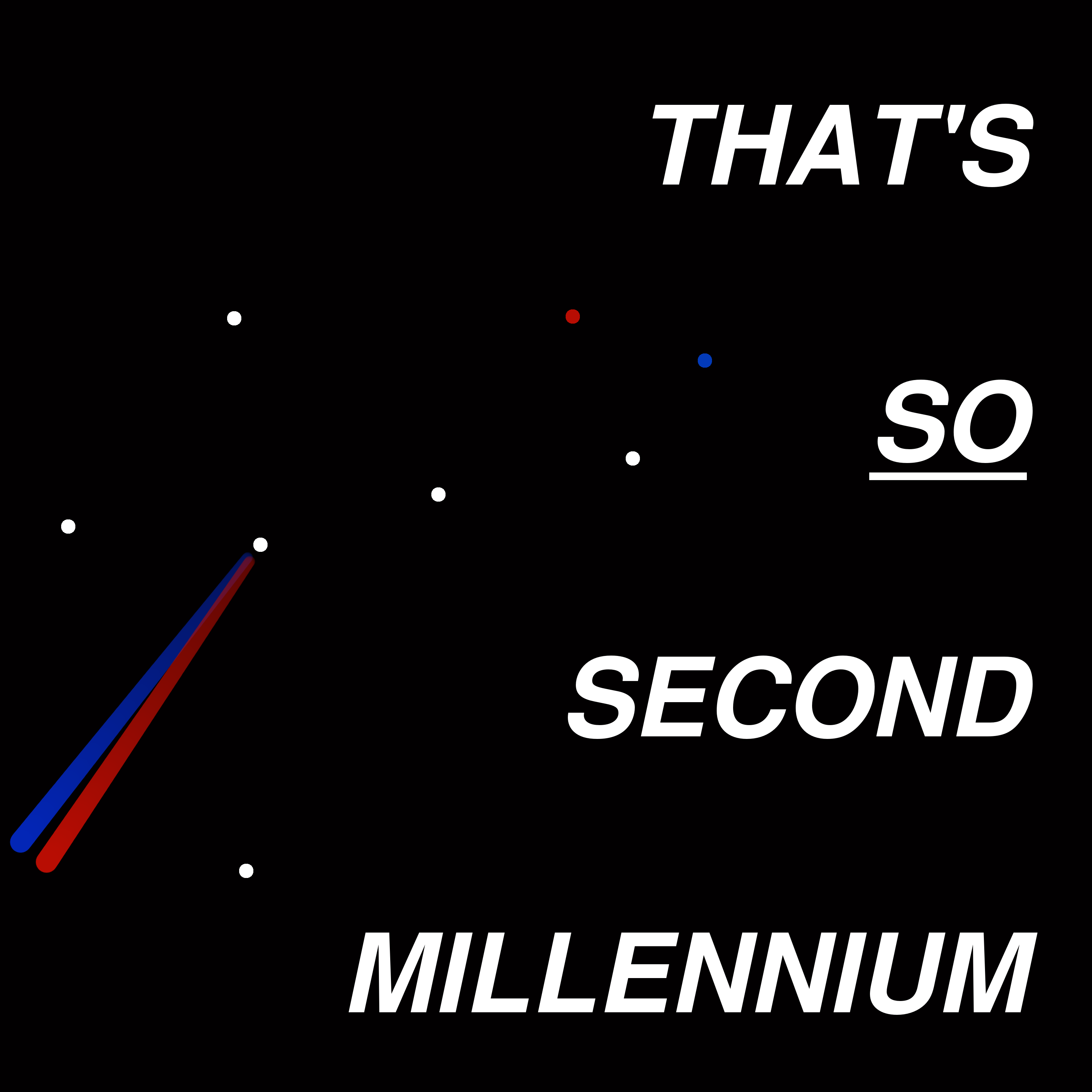Episodes

Monday Oct 08, 2018
Episode 028 - Absolute Geologic Dating
Monday Oct 08, 2018
Monday Oct 08, 2018
In this episode we continue into the next logical topic, absolute dating, which is done via measurement of radioactive parent and daughter isotopes. Thus we move from the 19th century and classical physics into yet another way in which 20th century physics has revolutionized science.
Paul gives a rundown, with many apologies for the exact data of isotope numbers and half-life lengths he has managed to forget, of the theory of radioactive decay. Bill, our proxy for the man on the street, starts us off with a common notion of half-life. From there we cover some of the basics and most commonly used isotopic systems: uranium-lead, thorium-lead, a discussion of why carbon 14 is so seldom used in geology, potassium-argon, and a note that more systems are always being brought into use. We discuss the distinct types of rocks that are best used for radiometric dating and how the relative dating methods have to be used in an interwoven system with radiometric dating in order to assemble the whole system of geochronology that we use today.
We end the podcast with a discussion of how science is the very opposite of a conspiracy theory or a political campaign. The geologic dating systems need interlocking data, and they also benefit from it. In such a system, contradictions do spring up--one study doing biostratigraphy might conflict with another using zircons. What science does is not to sweep that under the rug...instead we throw resources and graduate students at it until we get a resolution to the conflict.
(Zircon photo credit Harald Schillhammer via mindat.org. Note the pink and brown coloration...brown zircon is commonly that color due to radiation damage from the uranium and thorium it contains.)

Monday Oct 01, 2018
Episode 027 - Relative Geologic Dating
Monday Oct 01, 2018
Monday Oct 01, 2018
In this episode Paul lays out in a more systematic way the methods used in geology since the late 18th century to erect the detailed stratigraphic history of the Earth. Lithostratigraphy, which works via Steno's Laws, can be used on all the rocks in any outcrop. Its shortcoming is that it cannot be extended beyond a regional scale, at best--say, the state of Wyoming, or Wales and Corwall, etc. Biostratigraphy, the use of fossils, which includes the selection of specially suitable index fossils, allows correlation of strata across continental, oceanic, and worldwide scales. However, not every rock--not even every sedimentary rock--is a good home for fossils. It is only by the use of both methods in tandem that a complete relative geologic timescale has been assembled and erected.
You will note that in passing I mentioned that the idea of extinct organisms was difficult for European scholars, specifically, in the 17th century to accept, and then I go on to give you a tell by speaking of Renaissance "gurus"...of course, I mean to contrast European thought with Indian thought, in which the idea of extinct organisms is not so hard to fit in to an idea of long, cyclical histories of periodic destruction and remaking of the Earth and universe.
Two specific points: One, the word evolution contains a lot of conceptual components. What we are discussing in this episode, what is almost beyond realistic controversy at this point, is what I would term "succession of species." Matching sequences of fossils, in their relative age relationships as indicated by Steno's laws, recur in innumerable outcrops across the Earth. (I note in passing that an all-knowing Creator building this out of nothing in instantaneous creation must assuredly have known that this would deceive human beings eventually into thinking that there was a succession, and then you have to deal with the intellectual baggage of God deliberately lying to us.) That is different than the mechanism by which this succession of species was made to occur: inheritance, survival of the fit and extinction of others as environment and competition varied with time, mutations, viral transport of DNA, and whatever else actually caused this succession of species. That is less clear.
Two, the early workers in stratigraphy (especially the British ones) by and large wanted the Biblical narrative, and even the Biblical minimalist narrative to work out. The evidence forced them out of this interpretation. To reiterate the point from last episode, there was never a conspiracy to submerge the Bible story of creation and Noah's flood: the cycle of observation, reflection, and criticism of ideas killed theories depending on excessively broad interpretations of the Genesis text.

Monday Sep 24, 2018
Episode 026 - The Rejection of Young Earth Creationism in the 19th Century
Monday Sep 24, 2018
Monday Sep 24, 2018
- Decay and refutation of the Genesis minimalist paradigm for interpreting geology.
- What do contemporary young Earth creationists think happened during this epoch of human history (c. 1700-1830)?
- Do they think about it at all?
- Do they think that it was a conspiracy or open rebellion, a force of will to reject the Bible?
- Late 18th / early 19th century debate over the age of the Earth
- Change in status of fossils of extinct species from a doubted claim to a means of dating strata
- In Steno's time, the fact that shells of many extinct species clearly do not belong to living animals was considered a telling argument in favor of their abiotic origin.
- By the early 19th century, enough work had been done on systematic stratigraphy across Europe that geologists recognized a number of extinct fossil groupings that could be found in a variety of places, and the conviction grew that these assemblages were the remains of living communities that existed at specific intervals in Earth's past.
- In turn, using fossil assemblages to cross-correlate rocks across Europe and eventually across the rest of the planet allowed the erection and refinement of the geological timescale that we still use today.
- Hutton: "we can see no vestige of a beginning, no prospect of an end"
- Criticized as bringing back Aristotelian eternalism, but Hutton defends his statement as a comment on the limitations of what we can observe
- Final burst of "diluvialist" theory in the 1820s
- "Drift", including "erratic" boulders, gravels, and sands in places contemporary streams and gravity could not have left them (e.g. on hillsides)
- Some such deposits of gravel and sand in Europe and a few other places scattered across the world, particularly in caves, held recent fossils; these were bundled up together and held to be products of either Noah's Flood or a similar flood at a different, somewhat earlier date.
- No human remains found in these deposits (at the time the debate was being resolved, at any rate).
- Lyell begins publishing "Principles of Geology" in 1830
- Pushes the Huttonian theme of uniformitarianism to its extreme.
- Lumps Genesis minimalists, diluvialists, catastrophists, and even directionalists together
- Lyell's uniformitarianism was never accepted in absolute completeness
- Even before the advent of thermodynamics in the 19th century, it was still common sense that the Earth is cooling down with time.
- What happened to the evidence once taken as proof of diluvialism?
- The gradual, halting acceptance of ice ages as the source of "drift"
- Where did the debate go from there?
- Direct reference to Genesis as a historical reference for geological events died out of the living stream of geological debate.
- Physicists, and devotees of the new discipline of geophysics, began to look for ways to constrain the Earth's age with the means available to late 19th century physics. The name of William Thomson, later Lord Kelvin, is most remembered today for essentially issuing ultimata to stratigraphers and paleontologists based on his cooling histories of the Sun and the Earth. A tug of war ensued between geologists in these old subdisciplines, whose estimates of the required time for the deposition, uplift, and erosion of strata ran into the hundreds of millions of years, and the physicists, who thought that 100 million years was roughly the longest conceivable time allowable.
- Of course, the physicists were wrong; their estimates of the age of the Earth were yet another area where the advent of 20th century physics (radioactivity, which ultimately is a quantum physics effect) overturned previous thought:
- First, radioactivity heats the interior of the Earth--and nuclear fusion drives the Sun--meaning that the old estimates of cooling lifetimes were meaningless.
- Second, radioactivity gives us many ways of actually calculating numeric ages of minerals and rocks.
-The upshot for the debate between young Earth creationists and geologists.
- It pays to keep in mind that the radiometric dating line of evidence for the long age of the Earth came very, very late in the history of geology. It's not a primary argument, certainly not historically, and perhaps not even scientifically, for an age of the Earth that radically transcends 6,000 years.
- Geology, like physics, chemistry, and biology, was born in the 17th century, in an intellectual climate steeped in Biblical minimalism. There was no shortage of geologists who *wanted* a global Genesis flood to have existed and left evidence of its passing. They were argued, or even argued themselves out of this belief, very reluctantly.
- It's also worth taking some time to think:
- Does the text of Genesis demand a global flood? Really? We are that sure of the definitions of the words and the history of the text?
- Is a God that presided over the ad hoc instantaneous creation of a complex planet any greater in concept than the God that created a whole universe and the laws that govern its growth and change over 13 billion years?

Monday Sep 17, 2018
Monday Sep 17, 2018
- Competitor paradigms in early geology, their conceptual and thematic relationships to Noah's Flood.
- Catastrophism and its inverse, uniformitarianism
Hutton, in some circles (especially Anglo-American ones) considered the father of geology, was a curious hybrid (from our point of view, anyway) of philosophical convictions. On the one hand, and what makes him famous and venerated among geologists today, is his methodology and core assumption that processes happening on the contemporary Earth are the same processes that have shaped it throughout its history. This idea was worked up and spread broadly by Lyell.
On the other hand, he expressed a thoroughgoing sense of teleology...that the world was set up in such a way so as to maintain its surface condition fit for animal life.
Controversy between "catastrophists" and "uniformitarians / actualists"
Cowper, "The Task": "[God] was mistaken in the date he gave to Moses" (Cowper himself is castigating these scholars)
The putative tension that people like Cowper, Steno, Pascal, even arguably Aquinas felt between science,
mathematics, philosophy and their faith
How has this played into the widespread notion that faith and reason are opposed?
Cf. the tension between being Christian and being a soldier
"Deists" like Werner and Hutton discard the rigid post-Reformation sola scriptura straitjacket, yet they become just as dogmatic about their own theories.

Monday Sep 10, 2018
Episode 024 - Geology after Steno: Diluvialism, Neptunism, and Vulcanism
Monday Sep 10, 2018
Monday Sep 10, 2018
With acknowledgments to A. Hallam and his Great Geological Controversies
18th century: it becomes more and more possible and even fashionable to discard the minimalist Scriptural timescale
Nevertheless, Western thought is so thoroughly steeped in Christianity that every major development is either an extension (subconscious or not) of a Christian theme or a deliberate rejection of one.
- Decay and refutation of the Genesis minimalist paradigm for interpreting geology.
- "Diluvialism", the theory that either Noah's Flood as a global phenomenon c. 3000 BC or a similar worldwide flood at a more loosely defined point in Earth's history
- Competitor paradigms in early geology, their conceptual and thematic relationships to Noah's Flood.
- Neptunism, vulcanism, plutonism
The difficulty of even finding good outcrops to come to solid conclusions about geological questions
Controversy between the "neptunists", "vulcanists", and "plutonists" revolves around a very limited number of observations at key field localities in west-central Europe:
Flat-lying basalts in Saxony sandwiched into a sedimentary sequence
Volcanoes in Italy, especially Vesuvius (the most accessible and famous)
Extinct but still recognizable volcanoes in Auvergne, in France, where basalt cones and flows overlie huge thicknesses of granite

Monday Aug 27, 2018
Episode 022 - Nicolaus Steno (Niels Stensen) - The Protogeologist
Monday Aug 27, 2018
Monday Aug 27, 2018
In this episode we discuss the life and times of one Blessed Niels Stensen (Latinized as Nicolaus Steno), a Dane who laid down the basic principles that undergird the whole science of geology, from paleontology to stratigraphy to mineralogy and crystallography. Our discussion in the podcast is indebted to The Seashell on the Mountaintop by Alan Cutler.
To better understand the impact of Steno's times on his thought and vice versa, we have to discuss extensively the intellectual world of the seventeenth century. If the thirteenth century saw a grand synthesis of Christian teachings with the best that ancient Greek philosophy had to offer, the seventeeth century was a time of vicious bickering over the Bible and between people just beginning the arduous task of observing the natural world and coming up with theories to interpret how it worked that were actually consistent with the observations. It was a time where we see the very beginnings of ideas that now are bedrock (pardon the pun) parts of our understanding of the world adrift in a sea of other ideas that now sound outright insane.
Steno bequeathed several principles of interpretation. Three (or so...depending on how one names and numbers them) have to do with rocks and fossils (at that time, "fossil" could mean almost any notable object embedded in a rock, whether the remnant of a living thing or a crystal or what we would now call a sedimentary structure, such as a raindrop cast or a ripple mark) and the order in which they formed; the fourth has to do with crystals, and allows one to distinguish crystals of different minerals. They are the laws of superposition, inclusion and/or cross-cutting relationships, original horizontality, and constant interfacial angles.
If you're interested in hearing another take on this brilliant and enigmatic man, you can now watch Andrew Sicree's talk from the Society of Catholic Scientists conference (discussed in last month's episode).

Monday Aug 20, 2018
Episode 021 - Hypocrisy and Geology: Battlegrounds Between Faith and Science
Monday Aug 20, 2018
Monday Aug 20, 2018
Bill and I start off by discussing some of the reasons why there is such animosity against faith and such a tendency to credit the claim that science and religion are mutually incompatible.
I think we miss a great deal of the point if we do not take into account the relentless critique Christianity has mounted OF ITSELF over the past half millennium. The Reformation splintered the Christian nations and sparked unprecedented bloodshed between Christians. There had been terrible episodes before, but these wars, culminating in the Thirty Years' War, were on a new scale. The massive hypocrisy of Christians killing Christians, and the continuing hypocrisy of Christian clergy enjoying positions of wealth and privilege in both Catholic and Protestant nations, sparked further critique, leading to the Enlightenment and modern liberalism and progressivism. I ask you...do you think anything like modern progressivism, which bases itself on advocating for the poor and the repressed, could have arisen except as a Christian critique of Christianity?
In any case, we continue down to the present to be living in the dwindling, waning days of that union between Church and State, even in the US, and the scandals from that are still with us, as we know this month in Pennsylvania and with the spectacle of Cardinal McCarrick. That provides powerful impetus to look for other sticks to beat Christianity with.
It doesn't help that there are also people, in numbers enough to be visible, who really do espouse a form of religion that is contradictory to science. The Bible itself makes no claim to be the only book worth knowing, but the post-Reformation world has quite a few people willing to make that claim on its behalf.
Turning back to the intellectual issues within the debate itself, I bring up the question: why does so much of the fracas around science vs. the Bible center on biology, when the real question is the Bible vs. geology? Biologists have no real basis for determining the rate and overall progress of evolution if they were not given access to the fossil record and geological time scale...by geologists. Further, there is a great deal more of the Bible that makes claims about geology than about biology. (It's still an extremely small fraction, but of that small fraction...)
In fact, as the science of geology got started with people like Nicolaus Steno (his sketch of a shark and shark's teeth is the image for this episode), one of their first tasks was to try to evaluate the record of stones and sediment for evidence of Noah's Flood. One of the first crises in geology was dealing with the failure of this quest to find evidence for a global flood (which may or may not be an accurate translation of the intent of the writer of that part of Genesis, but that's another story).

Monday Jul 30, 2018
Episode 018 - SCS Conference: Peter Koellner, Andrew Sicree
Monday Jul 30, 2018
Monday Jul 30, 2018
As I've mentioned, we batch recorded the last four episodes about a month ago, and so we opened with a retrospective on the conference as a whole and its significance.
We moved on to discuss Peter Koellner. Koellner was the next talk and probably deserves his own podcast. I have gotten his lecture slides from him but won't have time to analyze them for a few weeks. The short version for now is that he gave us some perspective on Godel's theorem, a result in mathematical logic that many (including many agnostics like the physicist and mathematician Roger Penrose) have taken to imply that human thought must transcend any finite logical system that could be, say, programmed into a computer: in other words, the human mind is not a computer. Koellner argued, in large part from Godel's own writings, that what he actually proved is probably that EITHER human thought transcends the mechanical OR that there are mathematical truths that transcend mind. This is potentially a blow to a number of people who rely on the argument to prove our superiority to our own machines, but I myself find either conclusion to be exciting.
Andrew Sicree was next. He gave this tremendously gung-ho talk about Father Nick Steno, the 17th century member of the founder's club of geology (I think that's fair; Sicree basically called him the founder, singular). It was mostly fairly familiar stuff to me, some of which I have lectured on myself in classes in passing. He is still known today for Steno's Laws of stratigraphy (i.e., the relative ages of rocks):
Principle of Superposition
Principle of Original Horizontality
Principle of Inclusions
and in mineralogy he is remembered for the Law of Constant Interfacial Angles, basically the very dimmest beginning of crystallography. However, Sicree gave some time to other aspects of Nicolaus Steno's thought and also to his career as a layman and cleric. I only thought I was a Nick Steno fan before this talk. Andrew Sicree is the real deal.

Monday Jul 09, 2018
Monday Jul 09, 2018
In today's episode we discuss Stephen Barr's talk at the SCS conference on June 9. His topic was the observer question in quantum mechanics. The observer problem is closely tied to the issue of probability and wavefunctions. We spend quite a while discussing what this problem is and how the question arises in the context of experiments like the famous two-slit experiment. The example of "Schrodinger's Cat" is an attempt to make this problem more understandable to the non-quantum mechanic. The cat is in some uncertain state, neither alive nor dead, until the observer opens the box and "collapses the wavefunction" to either a live cat or a dead one. In a two-slit experiment, a particle exists in some distribution of possible positions until an observer collapses the wavefunction and "forces" it to one tight range of locations (and for that matter momenta...).
This is very weird. Barr cited a long list of quantum theorists (von Neumann, London, Bauer, Wigner, Peierls, and others) who considered the problem and whether mind as such is crucial to whatever it is that does the measuring and observing to collapse quantum systems. Wavefunctions, with their consequent probability distributions, evolve according to Schrodinger's [or Dirac's?...a question I've had in the back of my mind many times...] equation with no internal mechanism to cause this collapse. Clearly two very unlike things interact to form quantum mechanics as we know it, as von Neumann stated explicitly (calling the observer / collapse phenomenon "process 1" and the wavefunction evolution "process 2").
It is clear that we can shift our mathematical formalism to incorporate any physical measurment device into the "system" and thus recognize it to be in the realm of wavefunction behavior. There is the "Wigner's friend" thought problem where even a human observer of an experimental setup can be placed in the "box" from the point of view of another human observer.
When we consider the observer problem from the point of view of a descriptive science (geology, astronomy, zoology, etc.) there is the immediate and rather alarming philosophical question: What was happening to, say, this star or tectonic plate or ancestral population of invertebrates before there was an observer to collapse the wavefunctions? Someone raised this question with Dr. Barr in the question and answer session after the talk. There is a phenomenon called "decoherence" (warning: that link is informative in places but far from the clearest read) which occurs for systems that are very open, interacting with their surroundings. Broadly speaking, the observable in question can trade uncertainty with its surrounding and settles down into a tighter range of possible states, simulating to some extent the effect of an observer collapsing the wavefunction. However, the two phenomena are not the same.

Monday Jun 18, 2018
Episode 012 - Society of Catholic Scientists
Monday Jun 18, 2018
Monday Jun 18, 2018
Not to be confused with the League of Extraordinary Gentlemen, although one would understand the mistake.
Bill interviews Paul about his experience and observations at the Society of Catholic Scientists conference that took place June 8-10 at the campus of Catholic University of America in Washington, D.C.
The SCS is a very young organization. Its first president is Stephen Barr, a physicist at the University of Delaware. Its first conference was in April 2017 in Chicago. The theme of the 2018 conference was "The Human Mind and Physicalism"--physicalism being a somewhat more precisely defined term than its synonym, materialism. (Believe it or not, some folks at the meeting thought those two elements in the title were probably incompatible.)
Paul discusses the meeting and the variety of scientists he saw and met there, including Barr, Juan Martin Maldacena (a prominent string theorist), Aaron Schurger (a neuroscientist), and more. Bill and Paul do a little digging and comment on motivations for the group, including the desire for fellowship (like the existing group, Catholic Association of Scientists and Engineers) but also to band together against the folly of the existing culture and its tired, hugely outdated idea that science and faith (certainly the Catholic faith) are logically incompatible. GK Chesterton was quite right when he commented that the quarrel between science and religion was properly left to prematurely arrogant scientists and sola scriptura fundamentalists back in the NINETEENTH century. It's the twenty-first, now, and we should get ourselves to the business of putting this to bed.
Paul elaborates on this final fact at some length, discussing the parallels between the current day and the scholastic synthesis of the thirteenth century. Odd, is it not, that in the broad sweep of history, Aristotle and his universe existing indefinitely backward in time lost out to the stories of a bunch of Hebrew peasants who thought the Prime Mover had actually created the world at a specific point...

